The Aerospace History Blog - Page 13

Post 060
Junkers Ju 88 prototypes
In 1935 the German ministry for aviation (RLM) isued a specifiction
for a fast medium bomber. This aircraft should fly at a cruising speed
of 450 km/h (280 mph). Being fast enough to escape fighter aircraft,
only one MG 15 was planned as defensive weapon. The Junkers
company designed a twin engine aircraft under the designation
project EF 59. The RLM ordered three prototypes. The first made its
maidenflight at December 21. 1936, named Ju 88 V1.

Posted by Uwe W. Jack

The prototype Junkers Ju 88 V1 D-AQEN during testing. It was equipped with two Daimler
Benz 600 A engines. The double yellow fuselage bands are the signal for other aircraft that
this aircraft has priority in the airspace. This applies to research-, test-, and blind flying
school aircraft.
(Click to download - the file may not be modified - commercial use is prohibited))
The fifth prototype Ju 88 V5 D-ATYU with the modified nose section for record flights.
The aircraft first flew at April 13. 1938.
(Click to download - the file may not be modified - commercial use is prohibited).
Junkers engineers Alfred Gassner and Heinrich Evers were
resposible for the design of the Ju 88. Both had worked in the USA
before and gained experience in lightweight all-metall construction
there.
The second prototype Ju 88 V2 D-AREEN first flew at April 10. 1937,
the third (Ju 88 V3, D-ASAZ) followed at September 13. 1937. This
was the first Ju 88 equipped with the new engine Junkers Jumo 211.
The Junkers Ju 88 V3 D-ASAZ was presented to officials
before the first flight with the new engine Jumo 211.
(Click to download- the files may not be modified -
commercial use is prohibited)).
Post 058
Ships, Aircraft and Flying Saucers
A short vacation on the Baltic Sea in Denmark brought with it a
surprising excursion into aviation history. The engines of the ferry
from Rostock to Gedser are supported by a rotor sail. This unusual,
rotating tower was invented by the German aviation pioneer Anton
Flettner (18885 - 1961) - hence it is also named Flettner sail.

Posted by Uwe W. Jack

Most passengers on board of the ferry
to Denmark misunderstood this tower
as a chimney - it is a sail!
The wind direction is indicated by the smoke. If the rotor sail rotates from right to left, it
generates a force in the direction of the photographer.
This is how an airplane with rotor wings was imagined in the 1930s.
(click to enlarge - the file may not be modified - commercial use is prohibited.)
Flying through rotation
The effect is based on the Magnus effect. A rotating body with air
flowing around it experiences propulsion on the side where the
speeds add up. Heinrich Magnus (1802 -1870) discovered this while
investigating the trajectories of grenades rotating in both directions at
the Kummersdorf Army test site south of Berlin.
Anton Flettner built an experimental boat in the 1920s, which he
sailed on Berlin's Wannsee lake. He also proposed this method for
generating lift for airplanes.
Anton Flettner’s boat on the Lake
Wannsee in Berlin with a rotor sail.
(the file may not be modified -
commercial use is prohibited.)
Flying saucers
Around the beginning of the 20th century, physicists were very skeptical
about the theory of gravity. Some believed that the Magnus effect
showed that gravity is generated solely by the rotation of a body and is
not a characteristic of matter. Rotation in a certain direction could even
cancel out gravity. This belief was very common. The young rocket
pioneer Robert H. Goddard (1882 - 1945), for example, fantasized in
1899 while sitting in a tree, about a rotationally driven spaceship from
Mars.
The UFO cheater of the 1950s, Georg Adamski, claimed that the
saucers from Mars and Venus were driven by rotating cylinders. This is
also how the mysterious Nazi "Glocke" aerial vehicle is supposed to be
able to hover. The misconception about the power of rotation persists to
this day.
Georg Adamski claims to have flown to Mars and Venus with such a vehicle - using
the power of rotating cylinders.
(this file may not be modified - commercial use is prohibited.)

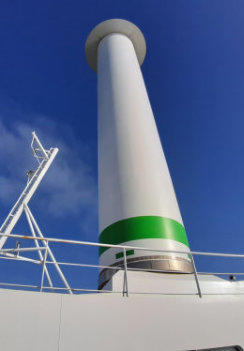
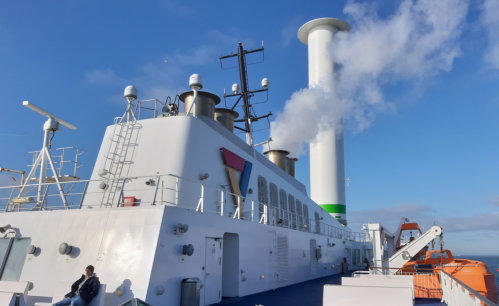
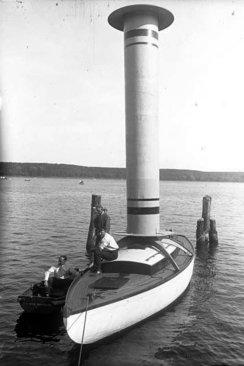
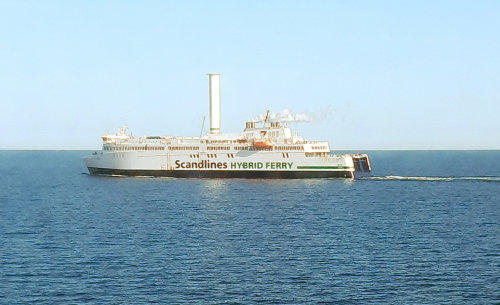


Halfway to Denmark, we met the other ferry with a rotor sail on its way to Germany.

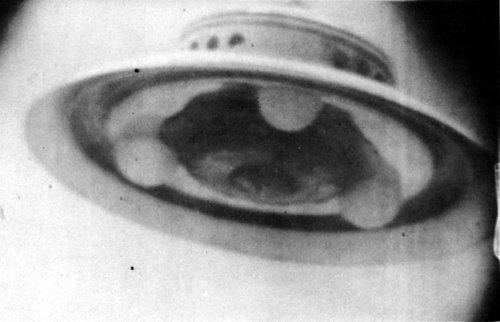
Fortunately, the ferry ship remained in the water despite the rotating
cylinder and did not fly to Venus, so I can report on this journey here in
good health.
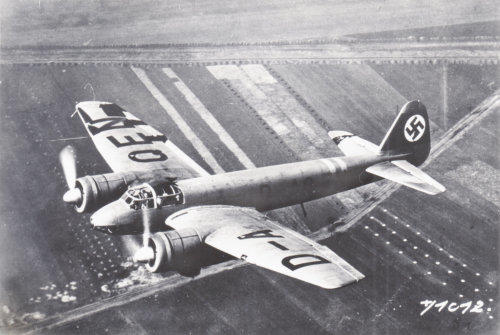
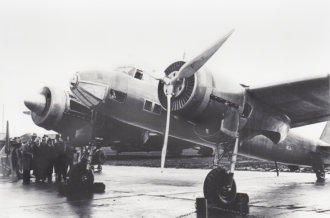
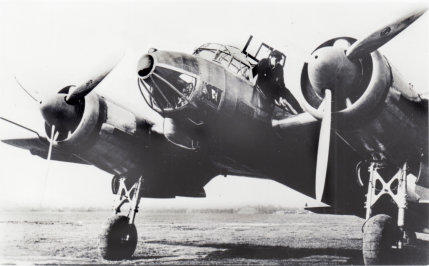

In order to impress the international aviation industry and air forces
of other nations, the RLM decided to break records with the Ju 88.
The Ju 88 V5 was therefore fitted with a streamlined nose and the
cockpit cover was made flatter. In March 1939, the aircraft set a
world record with a payload of 2000 kg and an average speed of
517 km/h (321 mph) over 1000 km (621 miles).
Post 059
The original Douglas DC-8 airliner
The Douglas company proposed in 1943 a new concept for a bomber.
This featured two engines inside of the fuselage driving two contra
rotating props in the tail. Two prototypes were build - the XB-42 and
the XB-42A. Named Mixmaster, the aircraft first flew at May 6. 1944.
With the use of jet engines, however, the XB-42 with piston engines
was no longer needed.
The concept was further developed by Douglas as the model 1004 -
DC-8 - for a passenger aircraft. Up to 45 passengers were to be
carried. Here, too, the design with pusher propellers was not
successful.

Posted by Uwe W. Jack

A projected successor of the Mixmaster was the DC-8 airliner with pusher props.
(Click to download - the file may not be modified - commercial use is prohibited)
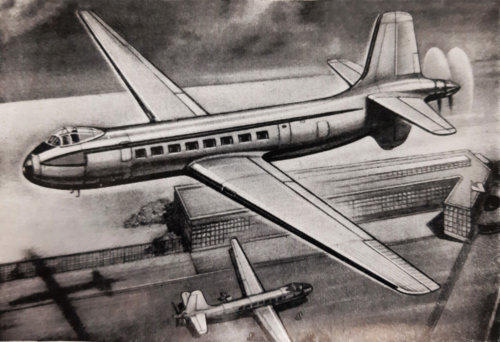

The prototype Douglas XB-42 Mixmaster
in flight.
Post 061
The Focke VTOL aircraft VFW VC 400
In August 1954, the famous helicopter designer Henrich Focke
patented an aircraft with rotating propeller nacelles or rotating wings
for vertical take-off and landing: “Improvements in Combined
Airplane-Helicopter Flying Machines”. In Germany in the 1960s, this
solution was considered feasible for a transport aircraft that could
operate without airfields.

Posted by Uwe W. Jack

The military version of the VFW VC 400 in colors of the Bundesluftwaffe. During the Cold
War it was feared that the USSR would start a war by disabeling all western airfields in the
first strike. A VTOL transporter would be the solution to this problem.
(Click to download - the file may not be modified - commercial use is prohibited))
In 1968 the German government decided to support the VC 400
project from the company VFW (United Aviation Technical Works =
Focke Wulf + Weserflug + Heinkel). For this purpose, a non-flyable
test stand was built. Two prototypes were then supposed to take
over flight testing.
A military version and a commuter aircraft for passengers were
planned. In 1971 the development was stopped for financial reasons.
Illustration from Focke’s british patent
no. 757279 from August 30, 1954.

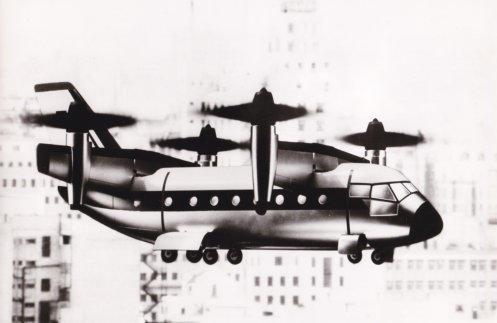
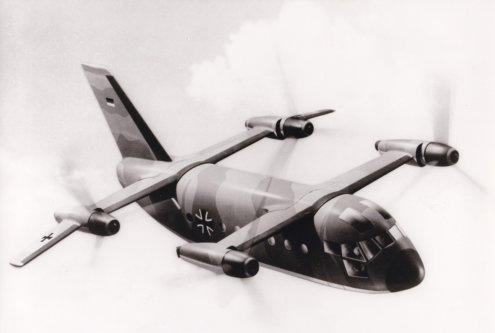
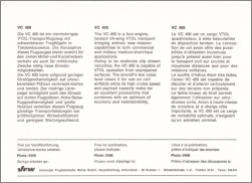

The VC 400 as a commuter landing in the center of a city.
(Click to download - the file may not be modified - commercial use is prohibited))
Description in German, English and French.
(Click to download - the file may not be
modified - commercial use is prohibited))










